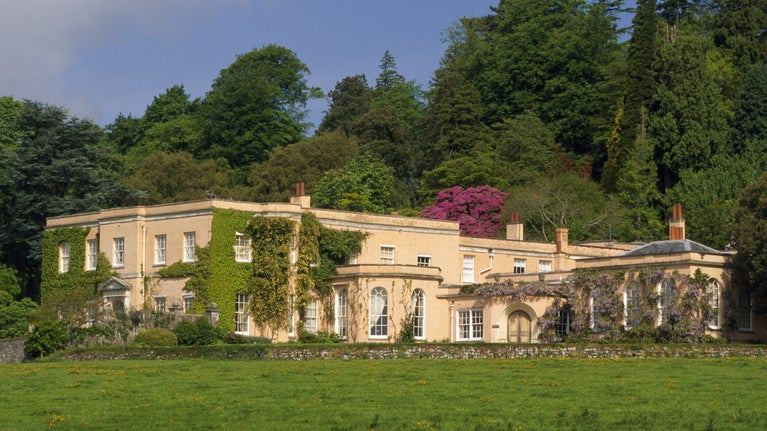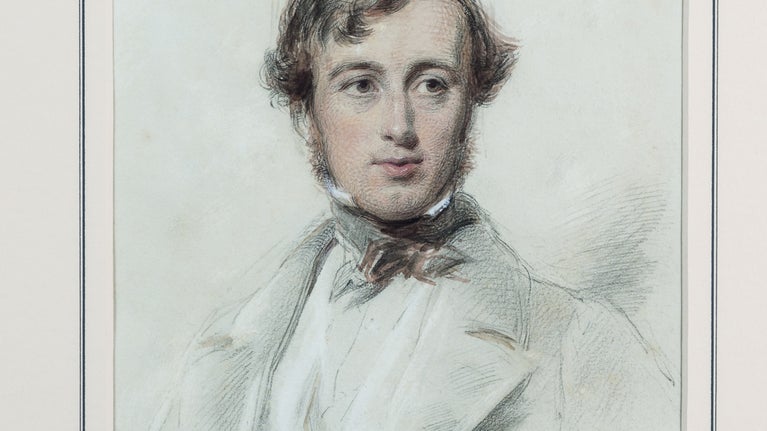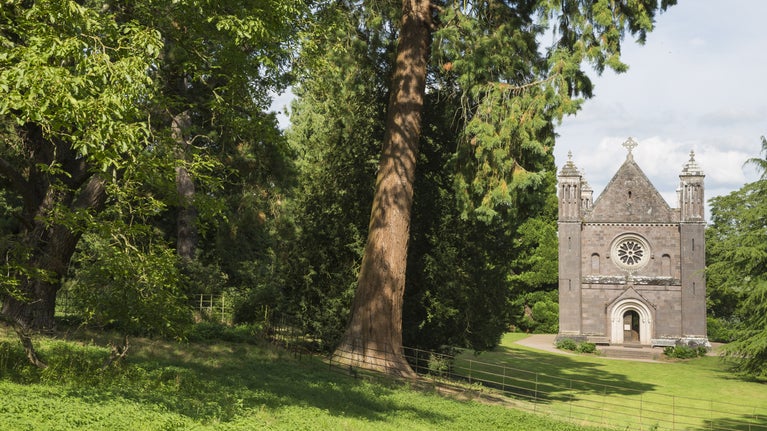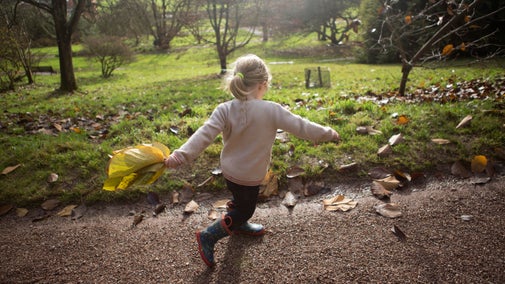
Discover more at Killerton
Find out when Killerton is open, how to get here, the things to see and do and more.

The story of Killerton, Devon, is closely tied to the history of the Acland family who lived here from the late 17th to mid-20th century. Immersed in local and rural life, their interest in political and social concerns had national and international impact. Killerton is also home to the National Trust’s most significant collection of costume and dress.
In about 1580, Sir John Acland (d.1620) purchased the manor of Columbjohn near Exeter. The neighbouring manor of Kildrington had been owned by a family, perhaps also called Kildrington, since at least 1242. The last to live there was Walter Kildrington, who also owned a house at nearby Collumpton. Many changes of owners followed Walter until the manor, by then known as Killerton, was bought by Edward Drewe (1542–98), Sergeant-at-Law to Queen Elizabeth I.
Sir John Acland left Columbjohn to his nephew, also John (1591–1647) a royalist commander during the British Civil Wars (1642–51). At some time between 1597 and 1611, the house at Killerton was purchased from Edward Drewe’s son Thomas (1584–1651), for John’s mother, Elinor Mallet (d.1614) and her second husband Sir Francis Vincent 1st Baronet (c. 1568–1640), member of Parliament for Poole 1584 and Deputy Lieutenant of Surrey.
The Acland family can be traced back to 1155 when Hugh de Accalenas is recorded as a freeholder of land at Acland Barton near Landkey in North Devon. The male Acland Baronets often held similar roles in society, usually a Member of Parliament, a Justice of the Peace, a Sherrif of the County and, until 1870, a Master of the Hunt. With their wealth from extensive landholdings, they were active in county life and traditional landlords to farm and estate tenants. They always had several homes, usually including one in London.
The attachment of each generation of the family to Killerton varied. Some made it their principal home, others preferred their house at Holnicote on Exmoor or later, Spyrdon, just beyond Killerton’s parkland. Through marriage and purchase the Acland estates grew to stretch across parts of Devon, Somerset and Cornwall.

An estate map of 1756 suggests that, by the 16th century and like many high-status country houses of the 16th century, Killerton was ‘E’ shaped with courtyards behind and a stable block to the east. The ‘E’ can be seen as a tribute to Queen Elizabeth I but the design was also a way to incorporate more windows and light than in earlier manor houses. A generation later, Sir Hugh, 5th Baronet (d.1714) and his wife Anne Daniel (1654–1727/8) moved to Killerton making it the main family home.
In 1765 the architect Sir Robert Adam drew up plans for a large, new house for Sir Thomas Acland, 7th Baronet (1723–85). This was never started and work began on an alternative design by another architect, James Wyatt, on the ridge west of Dolbury Hill behind the existing house. This was also left uncompleted and instead, in the 1770’s, the original house was extensively altered, probably by William Spring, Builder and Surveyor of Exeter, perhaps with the architect John Johnson although the level of his contribution is unclear. Parts of the earlier house remain incorporated into the new along with building materials reused from the unfinished Wyatt house.
During the 19th century more alterations to the house were made to accommodate growing families, often adding bedrooms. The house today reflects the last changes of the early 20th century with the addition of the entrance hall following a fire in 1924.
The Acland’s were linked by marriage, friendship and business to other significant families. Often tending towards those with similar political concerns and likeminded reformers, they sought to improve the lives of ordinary people, although not to challenge expectations of social situations or class. For the politician Sir Thomas Dyke Acland, 10th Baronet (1787–1881) this included supporting the abolition of slavery and the Christian mission both in Britain and abroad, with friends such as Hannah Moore and William Wilberforce. The collections contain letters from his daughter Agnes Acland (1821–95) to her brother Lt. Charles Baldwin Dyke Acland (1812–37), who was serving on the coasts of Africa with the Royal Navy to suppress the slave trade.
In the early 20th century, Sir Francis Acland 14th Baronet (1874–1939), served as a Member of Parliament and held several governmental posts. He was involved in the establishment of the United Kingdon Dentistry Board and the Forestry Commission. In 1925 his colleague, the Liberal politician and statesman Lloyd George, delivered a famous speech on Land Reform in the parklands at Killerton to 20,000 people. His wife Eleanor Acland (1878–1933) was active in the campaign for women’s suffrage, corresponding with leader of the suffragette movement, Christabel Pankhurst. Their son Sir Richard Thomas Dyke Acland, 15th Baronet (1906–90) also a Liberal Party Member of Parliament, led the parliamentary neo–Christian ‘Forward March movement’. He was a founding member of both the Campaign for Nuclear Disarmament (CND) and the Common Wealth Party which had significant influence and several members of parliament in the years 1942–5.

The Veitch family of gardeners had a great impact on Killerton, and English gardens more widely, through the work of their nurseries and the ‘plant hunters’ who they sponsored.
John Veitch (1752–1839) was employed by Sir Thomas Dyke Acland, 7th Baronet from 1770 and managed the estate from 1779–1811. Several of the plants that were collected from across the globe by ‘hunters’ sponsored by the Veitch nurseries can still be seen today including the Giant Redwood named as Wellingtonia after the Duke of Wellington.
In the 20th century Sir Francis Acland subscribed to expeditions by the botanist and author Francis Kingdon Ward to China, receiving packets of seeds which he grew himself at Killerton.
During the Second World War (1939–45) Killerton was home to schools evacuated from Sussex. Afterwards it was a hotel run by the Workers Travel Association (WTA), briefly ‘Dr Tuyn’s’ finishing school for wealthy overseas students (1960–62) and from 1963 was accommodation for St Lukes College, part of the University of Exeter. Sir Richard taught at St Lukes and, with his wife Lady Anne (1914–92), lived as warden in a flat in the house.
The ideal of public ownership of land, a key principle of his Common Wealth Party, and a desire that the estates of Killerton and Holnicote should survive largely intact, led Sir Richard, supported by Lady Anne, to transfer the property to the care of the National Trust in 1944. The 2585-hectare estate is one of the largest that the charity has ever received. With extensive public access it also remains a working landscape with many tenanted farms and cottages. The house opened to the public in 1978 presented to reflect the informal, family focused life of the last Acland’s who lived at Killerton.

Killerton holds the largest and most comprehensive collection of costume and dress in the National Trust. At its core is the collection once belonging to Baroness Paulise de Bush (1900–75), donated in 1977. It has since grown to include nearly 11,000 items, largely of women’s wear but including clothing of men and of children. The variety and significance of the material mean it is in constant public use for exhibition and study. Although historically unrelated to Killerton, costume has become one of the most well-known collections at the property.
Acland, Anne. A Devon Family The Story of the Aclands. Phillimore, 1981.
Tobin, Shelley. Paulise de Bush, the Story of a Collection in Costume, The Journal of the Costume Society, 1999.
Slocombe, Emma., Antrobus, Helen., eds. 100 Things to Wear, National Trust, 2025.

Find out when Killerton is open, how to get here, the things to see and do and more.
The Acland family, who passed on the estate to the Trust in 1944, did so for the benefit and enjoyment of everybody. Here's a brief history of the family who called Killerton home.

Discover some of the highlights in the collection at Killerton, from an historic landscape painting to a pair of special wine goblets.

Killerton is home to the National Trust’s biggest fashion collection, with more than 20,000 items of historic clothing and accessories, some dating back to the 17th century.

Step inside and explore the country house residence of Sir Francis Acland, 14th Baronet, home of the Acland family from the late 17th century. The house is open daily.

Step inside and explore the country house residence of Sir Francis Acland, 14th Baronet, home of the Acland family from the late 17th century. The house is open daily.

Explore the garden, woods and parkland at Killerton. With an estate that covers 6,400 acres, you'll find fun and adventures for children of all ages.

Learn about people from the past, discover remarkable works of art and brush up on your knowledge of architecture and gardens.

Explore the objects and works of art we care for at Killerton on the National Trust Collections website.
